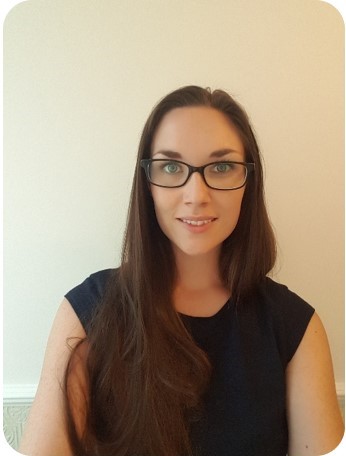Education and understanding to improve oral health outcomes
Featured Products Promotional FeaturesPosted by: Dental Design 17th May 2021

Along with caries, periodontal disease is described by the World Health Organization (WHO) as the “most important part of the global burden of oral diseases”.[i] But how many of your patients would be able to provide an on-the-spot definition for what periodontal disease is?
Improving patient understanding about things like periodontal disease, so they can identify and self-report symptoms for a swift intervention, is a key priority for oral health practitioners. With many practices still seeing fewer patients per day and waiting times being longer as a consequence, your role as an educator has never been more important.
Education is the means by which more people will become empowered to take control of their dental health. Words like “control”, also “choice” are important, because we could expect some message fatigue among patients, who are showing resistance to being told what to do. It is about giving people the tools but letting them know that they are the ones in the driving seat.
A very modern challenge
One of the challenges for modern dental practices is that, on one hand we are seeing people coming in because they are interested in elective treatments to improve function and/or aesthetics, which is positive. However, on the other, the incidence of certain serious oral diseases is on the rise. For example, there is increased demand for adult orthodontics, but cancers of the head and neck have “surged” – there are concerns about the numbers and late detection leading to poor prognoses.[ii]
For patients who are showing an interest in elective treatment, we must ensure that there is a solid foundation of oral health underpinning it all, and a willingness to adhere to a range of preventive behaviours in the long term. They must have the basics in place, and knowledge about the wide range of oral diseases. A good standard of hygiene will keep any treatment – from orthodontics, to root canal work – stable and beautifully maintained too, protecting their investment of money and time.
Learning to teach
So, how do you become a good teacher, an educator who is able to truly engage with their patients? It starts with communication. Strong communication is as much about listening as it is about talking. Let them know that you are not there to pass judgement if they don’t clean interdentally, or still haven’t managed to quit the cigarettes. Listen to what they have to say, tell them what you can see, then offer solutions they could choose to accept, if they wish. The solution might be something as simple as showing them how to use the latest interdental brushes or discussing strategies for smoking cessation. If they feel they can trust you, they are more likely to be honest and that will be the start of a great relationship.
Focus on collaboration – they are there to teach you, too. Every patient will have their own barriers to achieving better oral health. You are not there to lecture, or to use words they do not understand. To use the example of periodontal disease, tell them that there is much still being discovered about this condition, which is helping to develop new methods to treat it. So, you are in learning mode too! Also, some studies that suggest susceptibility to periodontal disease may be partly due to genetics, something a patient cannot control, but which underlines how important education is, along with effective prevention to mitigate the risks.[iii]
Patience is another key quality of a good teacher – if a patient returns to you, having abandoned an attempt to stop smoking, or their goal to clean interdentally every day, talk about what could be done differently next time. We are helping them to achieve better oral health for the rest of their lifetime, so they should not feel that they “failed” – if at first you don’t succeed, etc. Be adaptable – a one-size-fits all approach is not the right one. For example, better oral hygiene starts with effective daily cleaning, so look for a range that has options so different patients can clean comfortably. TANDEX has brushes and interdental brushes available in different ISO and Passage Hole Diameters (PHD) sizes, identified by the unique colour of the brush handle. Every patient can find their perfect fit, supporting compliance. It’s about sharing your tips and best practice, so they feel they’re working with you.
Ultimately, when you’re a good teacher your patients will know that oral health appointments are about more than, “Do I need a filling?” They’re for learning about the multifactorial causes for oral disease, which may relate to behaviours like a smoking habit, or even a poor diet. They’re for good conversations and talking honestly about what works, and what doesn’t. They are also about forging strong patient-practitioner relationship, to make oral care more accessible and engaging, leading to
better outcomes.
For more information on Tandex’s range of products,
visit https://tandex.dk/ or visit the Facebook page
Author: Kimberley Lloyd- Rees, on behalf of Tandex
Kimberley graduated from the University of Sheffield in 2010, where she now works as a clinical tutor in Dental Hygiene and Therapy as well as working in practice. She has spent her career working across a variety of specialist private and mixed dental practices, for the MOD and volunteering her time to a dental charity in Nepal.
[i] Bulletin of the World Health Organization. The burden of oral disease: challenges to improving oral health in the 21st Century. Link: https://www.who.int/bulletin/volumes/83/1/editorial20105/en/ (accessed March 2021).
[ii] Surge in cancer cases after Covid caused dental care delays. The Times, 1 March 2021. Link: https://www.thetimes.co.uk/article/surge-in-cancer-cases-after-covid-caused-dental-care-delays-vmcc8d6zz (accessed March 2021).
[iii] Carinci F, Palmieri A, Girardi A, Cura F, Lauritano D. Genetic Risk Assessment of Periodontal Disease during Dental Treatments. Ann Forensic Res Anal. 2015 ;2 (1):1011.
No Comments
No comments yet.
Sorry, the comment form is closed at this time.



